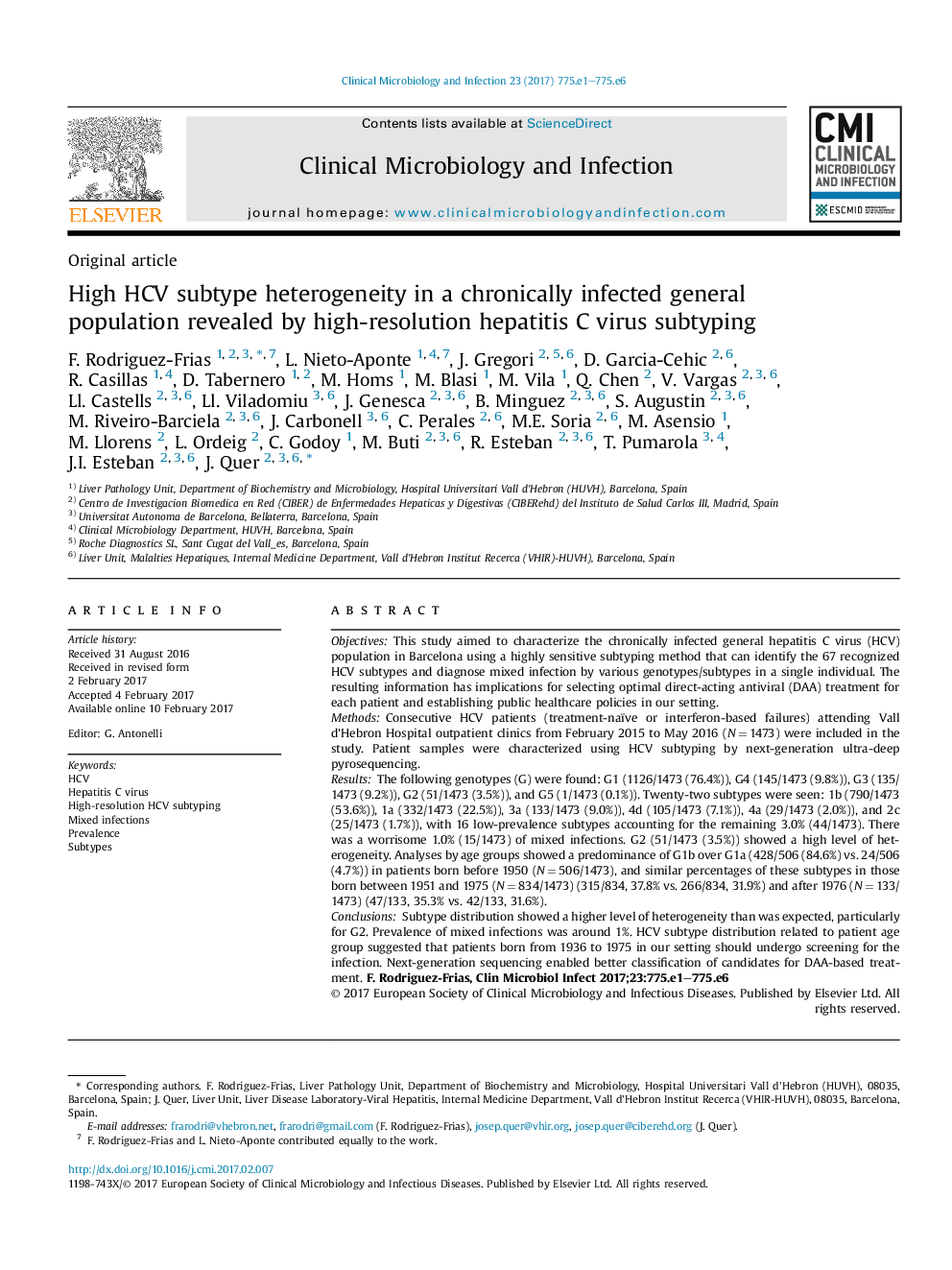| کد مقاله | کد نشریه | سال انتشار | مقاله انگلیسی | نسخه تمام متن |
|---|---|---|---|---|
| 5671591 | 1593020 | 2017 | 6 صفحه PDF | دانلود رایگان |

ObjectivesThis study aimed to characterize the chronically infected general hepatitis C virus (HCV) population in Barcelona using a highly sensitive subtyping method that can identify the 67 recognized HCV subtypes and diagnose mixed infection by various genotypes/subtypes in a single individual. The resulting information has implications for selecting optimal direct-acting antiviral (DAA) treatment for each patient and establishing public healthcare policies in our setting.MethodsConsecutive HCV patients (treatment-naïve or interferon-based failures) attending Vall d'Hebron Hospital outpatient clinics from February 2015 to May 2016 (NÂ =Â 1473) were included in the study. Patient samples were characterized using HCV subtyping by next-generation ultra-deep pyrosequencing.ResultsThe following genotypes (G) were found: G1 (1126/1473 (76.4%)), G4 (145/1473 (9.8%)), G3 (135/1473 (9.2%)), G2 (51/1473 (3.5%)), and G5 (1/1473 (0.1%)). Twenty-two subtypes were seen: 1b (790/1473 (53.6%)), 1a (332/1473 (22.5%)), 3a (133/1473 (9.0%)), 4d (105/1473 (7.1%)), 4a (29/1473 (2.0%)), and 2c (25/1473 (1.7%)), with 16 low-prevalence subtypes accounting for the remaining 3.0% (44/1473). There was a worrisome 1.0% (15/1473) of mixed infections. G2 (51/1473 (3.5%)) showed a high level of heterogeneity. Analyses by age groups showed a predominance of G1b over G1a (428/506 (84.6%) vs. 24/506 (4.7%)) in patients born before 1950 (NÂ =Â 506/1473), and similar percentages of these subtypes in those born between 1951 and 1975 (NÂ =Â 834/1473) (315/834, 37.8% vs. 266/834, 31.9%) and after 1976 (NÂ =Â 133/1473) (47/133, 35.3% vs. 42/133, 31.6%).ConclusionsSubtype distribution showed a higher level of heterogeneity than was expected, particularly for G2. Prevalence of mixed infections was around 1%. HCV subtype distribution related to patient age group suggested that patients born from 1936 to 1975 in our setting should undergo screening for the infection. Next-generation sequencing enabled better classification of candidates for DAA-based treatment.
Journal: Clinical Microbiology and Infection - Volume 23, Issue 10, October 2017, Pages 775.e1-775.e6